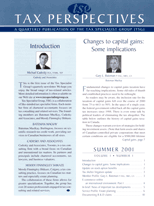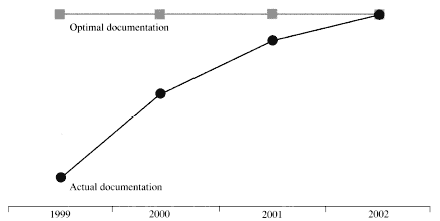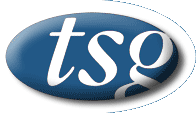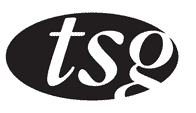
PDF Format
 Issue Contents Issue Contents
 All Issues All Issues
Summer 2001
Volume 1, Number 1
The information in Tax Perspectives is prepared for general interest only. Every effort has been made to ensure that the contents are accurate. However, professional advice should always be obtained before acting and TSG member firms cannot assume any liability for persons who act on the basis of information contained herein without professional advice.
Documenting R & D Claims
People will spend countless hours documenting an expense report to claim a $12 taxi ride or a meal. Yet when it comes to documenting SR&ED claims, which can yield astonishing tax refunds, people have a whole array of excuses. Many believe that their companies are not really doing R&D, while others feel it is too much trouble or do not want to submit to an audit.
Properly documented SR&ED claims receive a federal tax credit of 20 or 35% and qualify for incentives in most provinces as well. Like most assets of a corporation, SR&ED claims need to be reviewed periodically in order to optimize the return-the reduction in tax-on the investment. In our experience, even persons who are long-time claimants can benefit from a review of the claim's method of assembly and documentation. This article describes SR&ED documentation requirements and suggests some strategies for maximizing the value of claims.
REQUIREMENTS
The most important part of a successful SR&ED claim is a description of R&D activities. These activities are the "building blocks" of an R&D project and are crucial to the overall success of a claim. All costs are documented at the activity level and grouped into projects for filing as a finalized claim. The description in the claim must show that:
- the R&D activities have a goal of technological advancement that will be a departure from the corporate standard practice;
- technological uncertainty must be present and efforts to remove it must be made through the research of alternatives; and
- research was performed and documented on these alternatives, and documents to prove this research are retained.
Keeping track of false starts and failures, and recording new knowledge of uncertain value, gained from such failures, may go against the business grain and not be common in R&D departments.  But good SR&ED tax documentation requires such detail. The downloadable form on our Web site (www.bateman-mackay.com) can assist in creating, reviewing, and managing this documentation. But good SR&ED tax documentation requires such detail. The downloadable form on our Web site (www.bateman-mackay.com) can assist in creating, reviewing, and managing this documentation.
GETTING UP TO SPEED
New SR&ED filers and those who have not reviewed their R&D performance for a number of years face the challenge of documenting their R&D activities well enough to make a successful claim. Time is an important factor here, given the deadlines for making a claim and the fallibility of memory.
Assume that a new filer has a December 31 year-end. Also assume that its level of qualifying R&D activity is constant from year to year. It can make an SR&ED claim for fiscal 2000 by filing the claim by June 30, 2001, and it can change or make its fiscal 1999 claim by filing an amendment by the same date. A review now of R&D activities for 1999 will likely show an incomplete picture of what actually happened. A review of activities for 2000, while it may also yield incomplete results, will very likely be much more complete than the 1999 review. With a reviewing process in place as of 2001, the review of activities for 2001 and later years will approach the optimal level of SR&ED documentation accuracy. The accompanying figure shows the learning curve involved in getting up to optimal documentation speed.
There are several reasons for this learning curve, all of them related to the memories of the researchers involved in the R&D. Since claims are mostly labour, correct documentation of the labour component will improve the overall claim.
First, people's memories of recent activities are better — more accurate and complete — than their memories of activities long past. A review of activities a year old will thus produce better documentation than a review of activities two years old.
Second, people tend not to remember all of the activities in an R&D project. The omission of past activity costs is why current-year expenditures often exceed past-year costs, even if the level of activity has not changed from year to year.
Third, researchers often document only the time they spend on R&D and omit the rest of the day, thereby artificially "controlling" R&D time by reducing it. In our experience, this effect can reduce a claim by as much as 15%.
RECOMMENDATIONS
- Have a specialist in the area review the R&D claim at least once every three years. Annual reviews are best, to keep the learning curve from costing more than it should.
- Implement a time record system that records whole days and encourages researchers to allocate their time for the whole day, over all their activities.
- Review R&D activities quarterly so as to keep track of essential activities that might otherwise fail to be documented.
We would be pleased to help any readers review and assist in optimizing their R&D tax filings.
| 




 But good SR&ED tax documentation requires such detail. The downloadable form on our Web site (www.bateman-mackay.com) can assist in creating, reviewing, and managing this documentation.
But good SR&ED tax documentation requires such detail. The downloadable form on our Web site (www.bateman-mackay.com) can assist in creating, reviewing, and managing this documentation.